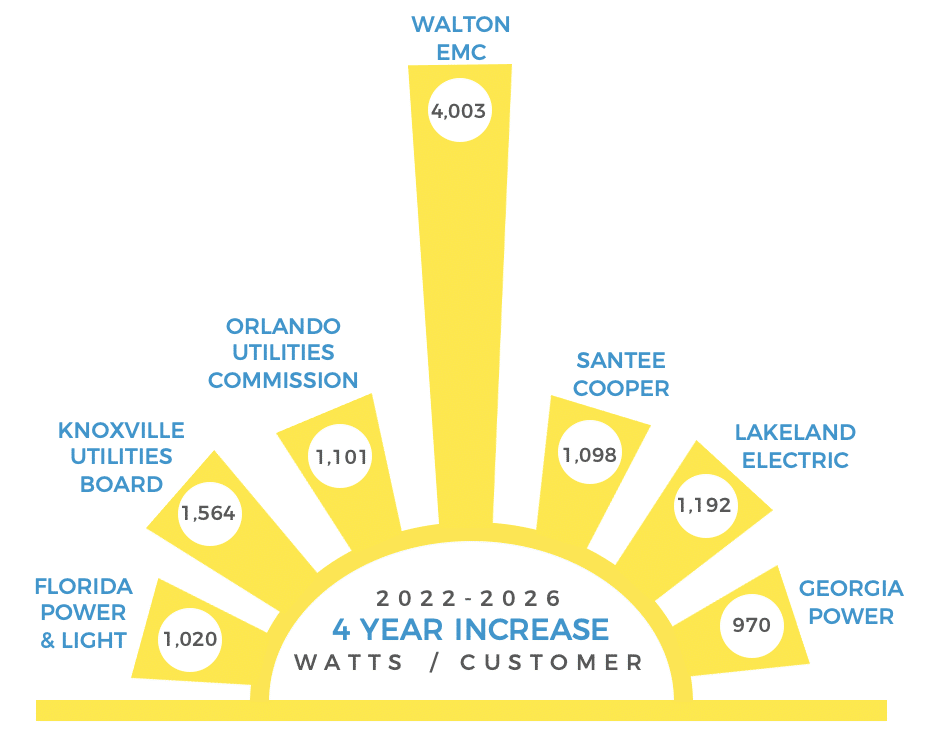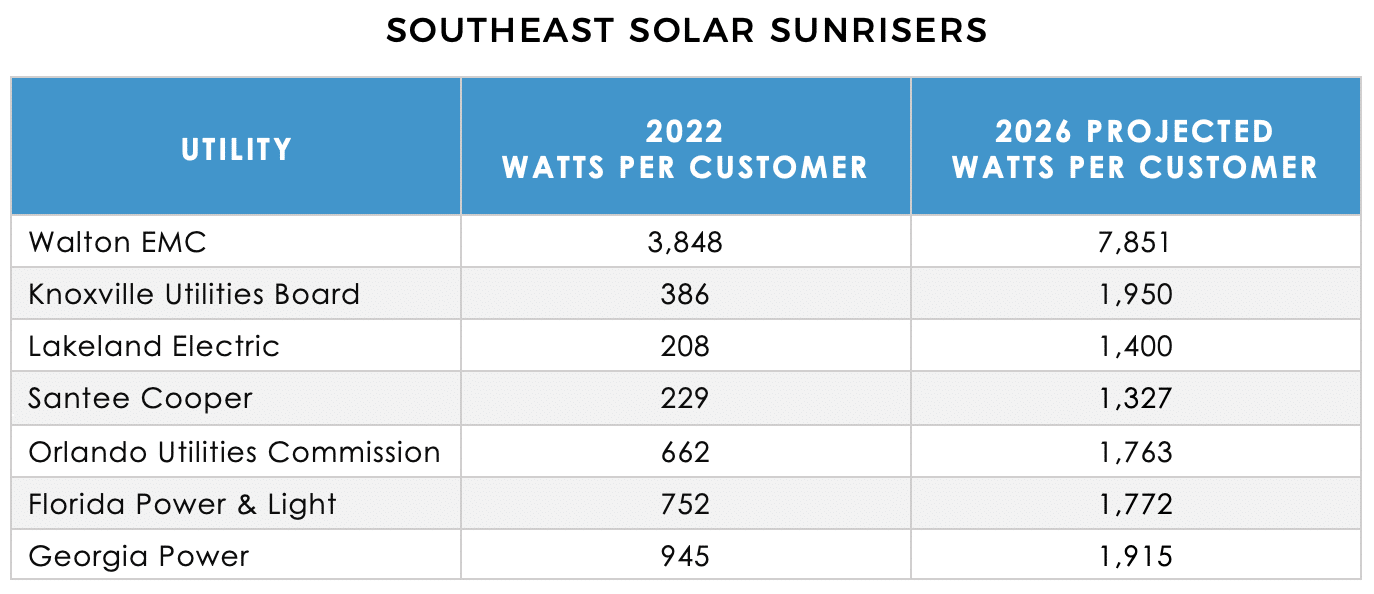SACE's annual "Solar in the Southeast" report ranks our region's largest utilities. In the final blog post of the series, we take a look at a report fan favorite: SunRisers – or the seven utilities exhibiting the highest solar ambition.
Bryan Jacob | August 2, 2023 | Energy Policy, Solar, UtilitiesWe’ve already referenced the laggards or SunBlockers from this year’s list: PowerSouth, the North Carolina Electric Cooperatives, and Alabama Power. Let’s end this year’s “Solar in the Southeast” report blog series with a discussion of the Southeast leaders, the SunRisers.

Download the Report Watch the Report Webinar Read the Report Blog Series
SunRisers are the seven utilities exhibiting the highest solar ambition – measured by the increase in watts per customer solar ratio between the base year (2022) and the four-year forecast (2026). Note: we do set a minimum utility size of 10,000 customers for eligibility on this list.


Who’s new on the list?
Perhaps the most interesting thing about the SunRiser list this year is that Santee Cooper made it. What makes this remarkable is that Santee Cooper started out in our SunBlocker category for the first two years of this annual “Solar in the Southeast” report. This worst-to-first accomplishment reflects both Santee Cooper’s own preferred portfolio to add 300 MW of solar per year starting in 2026, but also 575 MW of solar that Central Electric Cooperative has commissioned directly for its members.
Why is the Walton EMC bar so tall?
Walton EMC regained the top slot on this SunRiser list. Its 3,848 W/C in 2022 is already the highest solar ratio of traditional utilities in the Southeast, and the forecast for 7,851 W/C in 2026 positions it well above the rest. That’s why its bar in the SunRiser graph above is so much bigger than the others. The 4,003 W/C increase for Walton EMC is four times that of Georgia Power, the only other Georgia utility on this prestigious list. We explained in the last blog post of the series, the majority of the solar accredited to Walton EMC is being developed for Meta.
Why is the KUB forecast lower than last year?
Knoxville Utilities Board (KUB) made a decision to cancel one of its planned “Green Invest” projects with TVA. So they won’t be getting 177 MW from the Ridgely solar farm in Tennessee as originally planned. That reduced the total capacity of their Green Invest projects from 502 MW to 325 MW. And yet, KUB still earned the number two slot on our SunRiser list. In other words, KUB remains one of the Southeast solar leaders.
It has been a pleasure to prepare this blog series to further unpack some of the storylines from the Sixth Annual “Solar in the Southeast” report. I invite you to stay in touch with SACE and our efforts to promote responsible and equitable energy choices across the region.
Download the Report Watch the Report Webinar Read the Report Blog Series
#SSR2023